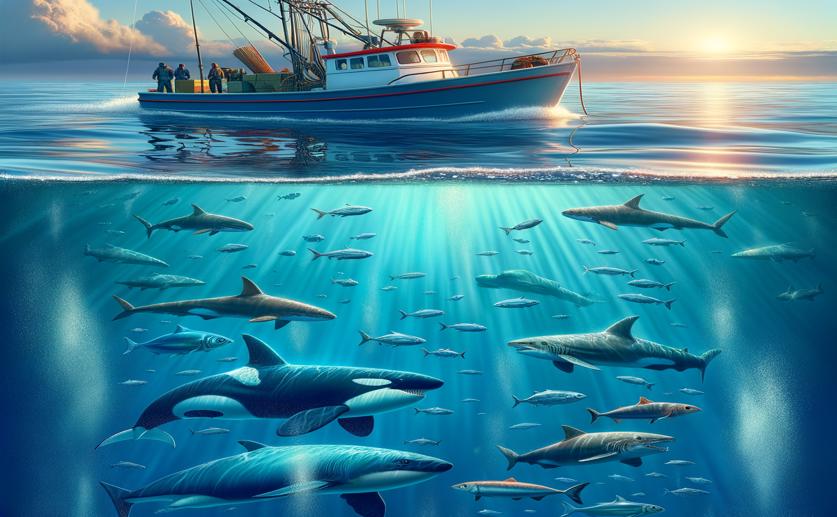
Hidden Interaction Between Fishing Boats and Ocean Predators
Jim Crocker
10th March, 2024

Image Source: Natural Science News, 2024
Key Findings
- In the northeast Pacific, up to 24% of marine predator encounters with fishing vessels are missed due to data gaps
- Some species, like sharks, have an even higher unseen interaction rate with fishing vessels, up to 36%
- Areas with high unseen fishing activity and low reported catches, like near 10°N, suggest underreporting in fishing data
References
Main Study
1) Unseen overlap between fishing vessels and top predators in the northeast Pacific.
Published 8th March, 2024
https://doi.org/10.1126/sciadv.adl5528
Related Studies
2) Global shark fishing mortality still rising despite widespread regulatory change.
3) Satellite mapping reveals extensive industrial activity at sea.
4) Fishery catch records support machine learning-based prediction of illegal fishing off US West Coast.



 28th February, 2024 | Greg Howard
28th February, 2024 | Greg Howard